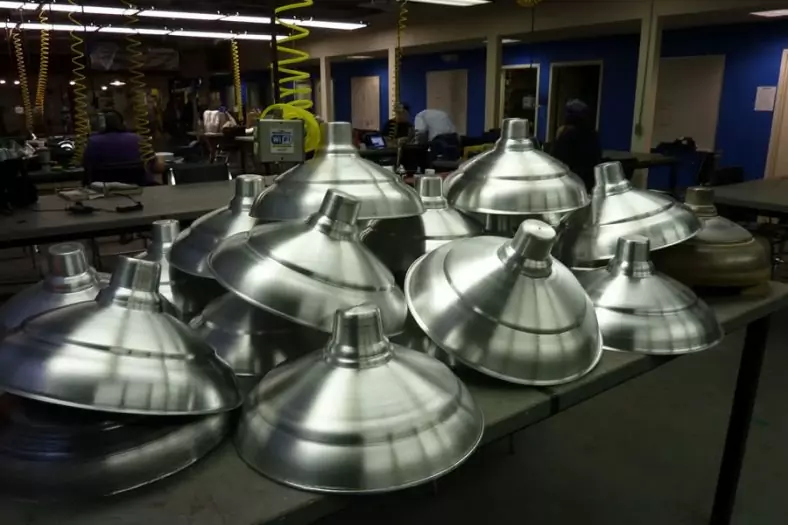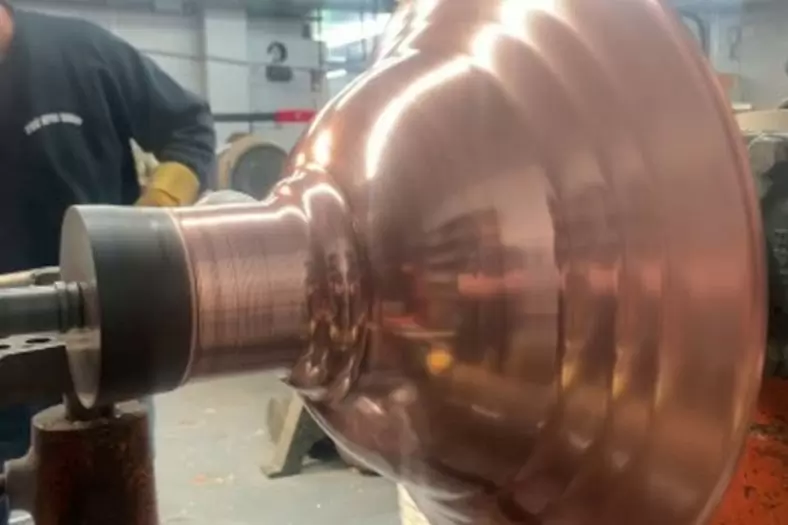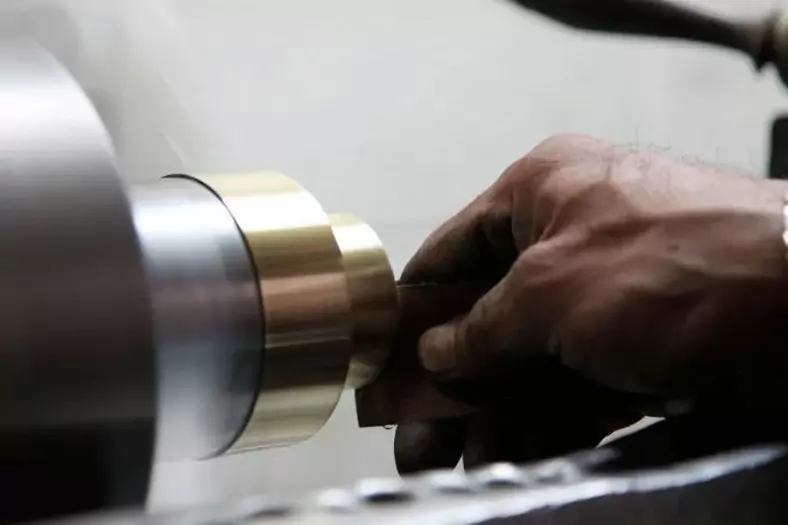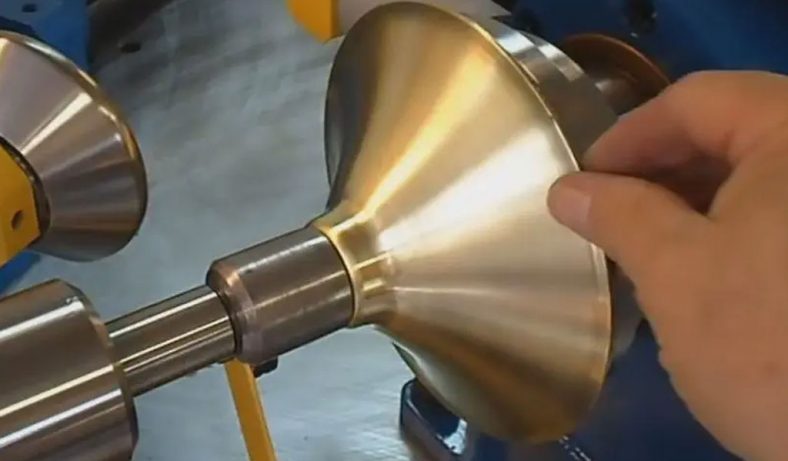
Musical instruments have played an essential role in human history, facilitating cultural expression and artistic creativity. One such instrument is the drum, known for its rhythmic melodies and powerful beats that have captivated audiences worldwide. In this article, we will explore the fascinating process of creating a musical drum body using precision spinning.
This unique technique not only ensures the drum’s acoustic excellence but also allows for artistic customization, resulting in a harmonious blend of sound and aesthetics. Join us as we delve into the intricate world of drum-making, where craftsmanship meets musicality.
Understanding the Precision Spinning Process
1.What is Precision Spinning?
Precision spinning, also known as metal spinning or spin forming, is a metalworking process used to shape flat metal discs or tubes into hollow cylindrical or conical parts with high precision and consistency. This technique employs the use of specialized machinery called metal spinning lathes or spinners. The metal blank is clamped onto a mandrel and rotated at high speeds while pressure is applied using shaping tools or rollers. As the metal spins, it is gradually formed into the desired shape.
In the context of drum making, precision spinning is utilized to create the drum shell – the body of the drum that houses the drumheads and generates sound resonance. While precision spinning is often associated with metalworking, it can also be applied to wood and other materials to shape drum shells with equal accuracy.
2.Historical Significance of Precision Spinning in Drum Making
The roots of precision spinning in drum making can be traced back to ancient civilizations. Historically, drums were primarily constructed using natural materials like animal skins and hollowed-out tree trunks. As metalworking techniques evolved, artisans began experimenting with shaping metals for various applications, including drum construction.
In the late 19th and early 20th centuries, precision spinning became a popular method for creating metal drum shells due to its efficiency and cost-effectiveness. This advancement in drum manufacturing allowed for consistent drum shell production, which contributed to the standardization of drum sizes and improved overall quality. With precision spinning, drum makers could achieve the desired thickness, shape, and durability for a wide range of drum sizes and types, from snare drums to bass drums and beyond.
3.Advantages of Precision Spinning Over Traditional Drum Crafting Methods
Precision spinning offers several key advantages over traditional drum crafting methods, making it a preferred technique for drum shell production:
- Seamless Construction: Precision spinning enables the creation of seamless drum shells. Unlike other methods that involve joining separate pieces, precision spinning forms a continuous shell from a single blank, resulting in improved structural integrity and sound resonance.
- Consistency and Accuracy: With precision spinning, drum manufacturers can produce multiple drum shells with unparalleled consistency and accuracy. This uniformity ensures that each drum of the same model exhibits similar tonal characteristics and playability.
- Versatility in Materials: While traditionally associated with metalworking, precision spinning can also be adapted for wood and composite materials. This versatility allows drum makers to experiment with various materials to achieve distinct tonal qualities and appearances.
- Cost-effectiveness: Precision spinning streamlines the drum manufacturing process, reducing production time and costs. Additionally, its seamless construction eliminates the need for additional materials and laborious joining processes, contributing to overall cost savings.
- Customization Options: Despite the industrial nature of precision spinning, it offers room for artistic customization. Drum makers can incorporate unique engravings, designs, and finishes, allowing musicians to express their individuality through their instruments.
- Improved Sound Resonance: The seamless construction achieved through precision spinning enhances the drum’s acoustic properties. The absence of seams eliminates potential weak points that could dampen sound resonance, resulting in a more vibrant and resonant tone.
Precision spinning plays a crucial role in the art of drum making, providing a versatile and efficient method for creating drum shells with unparalleled consistency, accuracy, and sound resonance. As technology and craftsmanship continue to evolve, precision spinning remains a time-honored technique that empowers drum makers to craft exceptional musical instruments enjoyed by musicians and audiences worldwide.
Selecting the Right Materials
Wood Selection for Drum Shells:
Wooden drum shells are revered for their warm and organic sound qualities, making them a popular choice among drummers in various music genres. The selection of the right wood species significantly influences the drum’s tonal characteristics, resonance, and overall performance. Here are some commonly used wood types for drum shells:
- Maple: Maple wood is one of the most popular choices for drum shells due to its balanced tonal characteristics. It offers a warm and full-bodied sound with a well-defined low end, a smooth midrange, and a slightly enhanced high end. Maple shells are versatile and suitable for various musical styles, making them a go-to option for drummers worldwide.
- Birch: Birch wood is known for its bright and focused sound. It produces a pronounced attack and a strong midrange presence, making it particularly well-suited for genres that require cutting and articulate drum tones, such as jazz and fusion.
- Mahogany: Mahogany is valued for its rich and warm sound, emphasizing the lower frequencies. It provides a deep and resonant tone, making it an excellent choice for drummers who prefer a more vintage or soulful sound.
- Oak: Oak is a dense and robust wood that offers a powerful sound with a strong attack and increased volume. Oak shells provide excellent projection and sustain, making them suitable for drummers who require a commanding presence in their playing.
- Cherry: Cherry wood produces a balanced and slightly dark tone, with a pleasant mix of warmth and brightness. Cherry shells are often sought after for their unique sound characteristics and aesthetic appeal.
- Walnut: Walnut is known for its deep, dark, and warm tone. It offers a slightly compressed sound with a pronounced low end, making it an attractive choice for drummers seeking a distinctive and characterful sound.
- Exotic Woods: Some drum makers and custom drum builders experiment with rare and exotic wood species to create unique and highly customized drum shells. Exotic woods can offer a wide range of tonal possibilities, but they are often more expensive and may have specific environmental considerations.
Ultimately, the choice of wood should align with the drummer’s musical preferences, playing style, and the sound they want to achieve. Each wood type brings its own sonic signature, allowing drummers to find the perfect match for their artistic expression.
Metal Drum Shells: Choosing the Ideal Alloy:
Metal drum shells are renowned for their bright and cutting sound, making them a popular choice in genres like rock, metal, and pop. The selection of the right metal alloy significantly impacts the drum’s sound characteristics and performance. Here are some commonly used metal alloys for drum shells:
- Aluminum: Aluminum drum shells offer a clear and bright sound with a quick attack and excellent sensitivity. They are lightweight and provide a balanced tone, making them suitable for various playing styles and genres.
- Steel: Steel drum shells deliver a powerful and penetrating sound with a pronounced high-end shimmer. They are durable and have a strong projection, making them ideal for drummers who require a cutting and assertive sound.
- Brass: Brass drum shells produce a warm and resonant sound with a touch of brightness. They offer a rich midrange and a rounded low end, making them popular in various musical contexts.
- Copper: Copper drum shells provide a rich and dark tone with enhanced warmth and depth. They are prized for their musicality and are often favored in jazz and fusion settings.
- Bronze: Bronze, an alloy of copper and tin, offers a combination of warmth and brightness. Bronze shells have a balanced tonal profile with a focused and crisp sound.
- Stainless Steel: Stainless steel drum shells are highly durable and produce a bright and cutting sound. They are known for their sharp attack and clarity, making them suitable for drummers who seek a defined and powerful sound.
- Titanium: Titanium drum shells are relatively rare but are sought after for their unique tonal qualities. They offer a mix of warmth and brightness, with a distinctive character that can be appealing in specific musical contexts.
- Nickel-Silver: Nickel-silver drum shells are less common but can provide a unique and complex sound with a blend of warmth and brightness.
Other Alternative Materials for Drum Bodies:
In addition to wood and metal, drum makers have explored alternative materials to create unconventional and distinct drum shells. These materials can introduce new sonic possibilities and enhance the instrument’s aesthetics. Some examples include:
- Acrylic: Acrylic drum shells are transparent and provide a bright and punchy sound with a strong visual impact. They gained popularity in the 1970s and continue to be used in various modern music genres.
- Carbon Fiber: Carbon fiber drum shells are lightweight, durable, and produce a focused and clear sound with excellent projection. They are favored for their modern aesthetics and unique tonal characteristics.
- Hybrid Shells: Some drum makers combine different materials in hybrid drum shells, such as wood and metal or wood and acrylic. These hybrid combinations aim to blend the tonal qualities of different materials to create a versatile and distinctive sound.
- Composite Materials: Drum manufacturers have experimented with various composite materials to create lightweight and innovative drum shells. These materials often offer a mix of acoustic properties and can be environmentally friendly.
When exploring alternative materials for drum bodies, drummers should consider their tonal preferences, playing style, and the musical context in which they will use the drums. Each material brings its own unique sonic and visual identity to the instrument, allowing for endless possibilities in drum design and sound exploration.
Drum Precision Spinning Technique – Step-by-Step Guide to Precision Spinning
Precision spinning is a skilled process that requires careful attention to detail and craftsmanship. Here is a step-by-step guide to how drum shells are created using the precision spinning technique:
Blank Preparation
The first step in precision spinning is preparing the metal or wood blank that will be shaped into the drum shell. The blank is typically a flat circular disc or tube, with its size and thickness determined based on the desired drum dimensions. For metal blanks, the chosen alloy is often in the form of a sheet or rolled metal, while wood blanks are cut and shaped from specially selected planks.
Forming the Initial Shell Shape
The blank is securely clamped onto a mandrel, which serves as a central axis for the spinning process. The mandrel is mounted onto a metal spinning lathe, which allows for controlled rotation. As the lathe spins the blank, the craftsman applies pressure to the outer surface using various shaping tools or rollers. This pressure causes the blank to stretch and bend, gradually taking the shape of a cylindrical drum shell.
During this stage, the craftsman carefully monitors the shaping process to ensure the shell retains the desired dimensions and does not develop any irregularities.
Creating Beads and Grooves for Stability
To enhance the structural integrity of the drum shell and provide stability for drumheads and hardware, precision spinning incorporates the creation of beads and grooves. Beads are raised lines or ridges that run horizontally along the shell’s length, reinforcing the drum’s structure. Grooves, on the other hand, are shallow indentations or channels that are strategically placed on the inside or outside of the shell to provide additional stability and strength.
These beads and grooves help prevent warping or deformation of the drum shell during play and provide a secure attachment point for tension rods and hardware.
Achieving Uniform Thickness and Smooth Finish
As the spinning process continues, the craftsman focuses on achieving uniform thickness throughout the drum shell. This step is crucial for ensuring consistent sound quality and resonance across the drum’s surface. Skilled artisans use their expertise to apply just the right amount of pressure and control the spinning lathe’s speed to achieve the desired thickness.
Additionally, the craftsman carefully monitors the surface of the drum shell to ensure a smooth and even finish, free of any imperfections or irregularities that could affect the drum’s performance.
Heat Treatment and Annealing
Once the desired shape and thickness are achieved, the drum shell may undergo heat treatment and annealing. Heat treatment involves subjecting the shell to controlled heating and cooling processes to modify its material properties, such as hardness and flexibility. Annealing, in particular, is a crucial step in metal spinning that reduces internal stresses and enhances the material’s overall strength and malleability.
Heat treatment and annealing also help to stabilize the drum shell’s shape and prevent it from warping or distorting over time.
Trimming and Finishing Touches
In the final stages of precision spinning, the excess material around the edges of the drum shell is trimmed and removed. This process ensures that the shell’s dimensions are precise and in accordance with the intended design. Any sharp edges or imperfections are carefully smoothed out to create a refined and aesthetically pleasing appearance.
Depending on the drum manufacturer’s preference, the drum shell may be left with its natural surface or undergo additional finishing processes, such as polishing or applying coatings, to enhance its appearance and protect the material.
Precision spinning is a remarkable process that transforms a flat blank of metal or wood into a seamless and precisely shaped drum shell. The craftsmanship involved in each step ensures that the resulting drum body exhibits excellent structural integrity, uniform thickness, and a smooth finish. Through precision spinning, drum makers can create exceptional drum shells that serve as the foundation for beautifully resonant and sonically expressive musical instruments.
Fine-Tuning the Acoustics
Understanding Drum Acoustics
Drum acoustics is the study of how sound is produced, transmitted, and amplified within a drum. Understanding the principles of drum acoustics is essential for fine-tuning the instrument to achieve the desired sound characteristics. Several key factors influence the drum’s acoustics:
- Shell Material and Construction: The material and construction of the drum shell significantly impact its tonal qualities. Different materials resonate at varying frequencies, producing distinct sound characteristics. For example, wood shells generally offer warm and organic tones, while metal shells provide bright and cutting sounds.
- Shell Thickness: The thickness of the drum shell affects its overall resonance and responsiveness. Thicker shells tend to produce a lower fundamental pitch with enhanced sustain, while thinner shells result in a higher pitch with shorter sustain.
- Bearing Edge: The bearing edge is the point where the drumhead comes into contact with the shell. Its shape and angle influence the way the drumhead vibrates and interacts with the shell, affecting the overall tone and sensitivity of the drum.
- Drumhead Selection: The type of drumheads used, such as single-ply, double-ply, coated, or clear, has a significant impact on the drum’s sound. Different drumheads produce varying levels of attack, sustain, and tonal characteristics.
- Drumhead Tension: The tension at which the drumheads are tuned affects the pitch and response of the drum. Higher tension results in higher pitches and increased attack, while lower tension produces deeper tones with a more open and resonant sound.
Tuning the Precision Spun Drum Body
Tuning the drum is a crucial step in achieving the desired sound and playability. Each drum size and type requires specific tuning considerations. Here are some tips for tuning a precision spun drum body:
- Start with Even Tension: Begin by tuning all the tension rods to approximately the same tension. This ensures that the drumhead is evenly stretched across the shell.
- Tune Each Rod Gradually: Go around the drum and make small adjustments to each tension rod in a criss-cross pattern. Gradually increase the tension until the desired pitch is reached. Repeat this process until the drumhead is evenly tensioned and the desired overall pitch is achieved.
- Listen for Resonance: Tap the drum near each tension rod while tuning to listen for any unevenness in pitch or unwanted overtones. Adjust the tension as needed to eliminate unwanted resonances.
- Experiment with Pitches: Don’t be afraid to experiment with different pitches to find the sound that best fits the musical context. Lower tensions produce deeper and more resonant tones, while higher tensions result in brighter and more focused sounds.
Enhancing Sound Resonance and Projection
To enhance the sound resonance and projection of a precision spun drum body, several techniques can be employed:
- Shell Reinforcement: Some drum makers add reinforcing rings or additional plies to the drum shell to enhance its stiffness and improve resonance.
- Air Vents: Strategic placement of air vents on the drum shell can allow for controlled air escape, reducing unwanted overtones and enhancing the drum’s overall projection.
- Internal Dampening: Applying dampening materials inside the drum shell, such as foam or felt, can help control excessive resonance and create a more focused and controlled sound.
- Drumhead Selection: Choosing the right drumheads that complement the drum shell’s material and size is crucial for optimizing sound resonance and projection.
Balancing Tones with Hardware and Accessories
The hardware and accessories used on the drum, such as tension rods, hoops, and mounting systems, can also influence the drum’s sound and playability. Here are some considerations for balancing tones with hardware and accessories:
- Hoop Type: Different hoop materials, such as die-cast, triple-flanged, or wood, can impact the drum’s sustain, sensitivity, and rimshot sound.
- Snare Wires: The number of snare wires, their material, and tension significantly affect the snare drum’s response and sensitivity.
- Mounting Systems: The mounting system used to attach the drum to a stand or drum rack can impact the drum’s ability to resonate freely.
- Drumheads and Dampening: Experimenting with various drumhead types and dampening options can help achieve the desired balance of tone and control unwanted overtones.
By carefully considering and fine-tuning each of these elements, drummers and drum manufacturers can optimize the acoustics of precision spun drums, creating instruments that are finely tuned and responsive to the musical needs of the players.
Artistic Customization of Precision Spun Drums
Precision spun drums are a type of musical instrument commonly used in various settings, including drum circles, performances, and music production. Artistic customization of precision spun drums can elevate their visual appeal, enhance their unique identity, and even contribute to their overall sound characteristics. Here are some creative ways to customize precision spun drums:
- Painting and Artwork: Use acrylic paints, spray paints, or other artistic mediums to paint intricate designs, patterns, or abstract art on the surface of the drum. You can create a theme that reflects your personality, the genre of music you play, or the ambiance you wish to create during performances.
- Airbrushing: Airbrushing allows for more intricate and detailed designs on the drum’s surface. You can work with stencils or freehand techniques to create stunning visuals that can range from realistic portraits to fantastical landscapes.
- Custom Drum Wraps: Drum wraps are vinyl or fabric coverings designed to fit over the drum’s shell. They come in a vast array of colors, patterns, and textures, allowing you to completely change the appearance of the drum. You can choose from various pre-made designs or even have custom wraps created with your artwork or band logo.
- Wood Burning: For wooden precision spun drums, wood burning can be an excellent way to add an artistic touch. You can use a pyrography pen to create intricate patterns, symbols, or illustrations directly onto the wood surface.
- Inlays and Decals: Inlays made of different materials (wood, metal, mother of pearl) can be embedded into the drum’s shell to create stunning visual elements. Alternatively, you can use decals or stickers for a more straightforward customization approach.
- LED Lighting: Incorporating LED lights into the drum design can create a striking visual effect, especially during performances in low-light settings. You can use color-changing LEDs or even program the lights to respond to specific drumming patterns.
- Custom Hardware and Accessories: Replace the drum’s existing hardware (lugs, tension rods, hoops) with custom-designed or unique pieces that reflect your artistic vision. Look for hardware with decorative engravings or unique finishes.
- Mixed Media: Combine various artistic techniques, such as painting and wood burning, to create a truly one-of-a-kind drum design. Experiment with different materials and textures to achieve an innovative and eye-catching appearance.
- Collaborations: If you’re not artistically inclined yourself, consider collaborating with a local artist or a friend who excels in visual arts. This can lead to a wonderful fusion of musical and visual artistry.
- Personalization: Customize the drum with your name, initials, or a meaningful quote that resonates with you. This personal touch can make the drum feel more special and connected to you as a musician.
Remember that the customization process should not interfere with the drum’s functionality or compromise its sound quality. If you’re unsure about any modifications, consult with a professional drum builder or technician to ensure the structural integrity and sound performance of your precision spun drum.
The Role of Precision Spun Drums in the Music Industry
Precision spun drums play a significant role in the music industry and have a wide range of applications in various musical genres and settings. Here are some key roles that precision spun drums fulfill in the music industry:
- Live Performances: Precision spun drums are commonly used in live performances across different music genres. They are an essential part of drum sets used in bands and ensembles, providing the rhythmic foundation for the music. Whether it’s rock, pop, jazz, funk, or any other genre, precision spun drums add depth and dynamics to live performances, contributing to the overall sound and energy of the music.
- Studio Recordings: In recording studios, precision spun drums are used extensively to capture drum tracks for albums and songs. Drummers carefully choose drum sizes, materials, and tuning to achieve specific tones and textures that complement the music being recorded. The versatility and customizable nature of precision spun drums make them a preferred choice for achieving desired sound characteristics in studio recordings.
- Music Production and Composition: In modern music production, precision spun drums are often used in digital audio workstations (DAWs) to create drum patterns and beats electronically. Producers and composers can program realistic drum sounds or experiment with unique and creative drum arrangements using virtual drum libraries based on precision spun drum samples.
- Drum Circles and Community Events: Precision spun drums are popular in drum circles and community music events. These events bring people together to play music collectively, promoting a sense of unity, rhythm, and creativity. Precision spun drums are easily accessible and allow participants of varying skill levels to join in and contribute to the communal music-making experience.
- Educational Purposes: Precision spun drums are valuable tools in music education. They are often used in school music programs, workshops, and private lessons to teach rhythm, technique, and musical expression. Their versatility makes them suitable for teaching various musical styles and traditions from around the world.
- Therapeutic and Wellness Settings: Music therapy often incorporates precision spun drums as part of therapeutic interventions. Drumming has been shown to have positive effects on mental and emotional well-being, stress reduction, and overall relaxation. Precision spun drums provide a tangible and engaging instrument for individuals to express themselves and connect with others through music.
- Experimental and Avant-garde Music: Precision spun drums can also find a place in experimental and avant-garde music, where musicians push the boundaries of sound and explore unconventional techniques and playing styles.
Overall, precision spun drums are versatile, dynamic, and accessible musical instruments that continue to shape the sound of various music genres and contribute to the rich tapestry of the music industry. Whether in live performances, studio recordings, educational settings, or therapeutic applications, they remain an integral part of the musical landscape.
Tackling The Volume Production of Drum Cavity Spun with Be-Cu.com
Precision metal spinning is a remarkable technique that has revolutionized the art of drum making. From selecting the right materials to fine-tuning the acoustics and incorporating artistic designs, every step plays a crucial role in creating a drum body that resonates with both musicians and audiences alike. With a rich history and an eye towards sustainability, precision spun drums continue to captivate the world with their harmonic melodies and powerful beats. As we celebrate the intersection of craftsmanship and musicality, let us appreciate the skilled artisans who bring these exceptional instruments to life and continue to shape the future of music.
When you work with Be-Cu.com, you’ll have access to cutting-edge precision spun technology, an array of stock materials, and the skills you’ll need to deliver on your vision. Our team of expert designers and tooling manufacturing engineers will guide you through the prototyping process, ensuring that you optimize your project for quality and cost during every phase.If you’re ready to get started but want to find out more about your precision spun drum enclosure options, contact us today to speak with one of our experts to get the assistance you need to make your ideas a reality.
View More of Our Spinning Products:
-
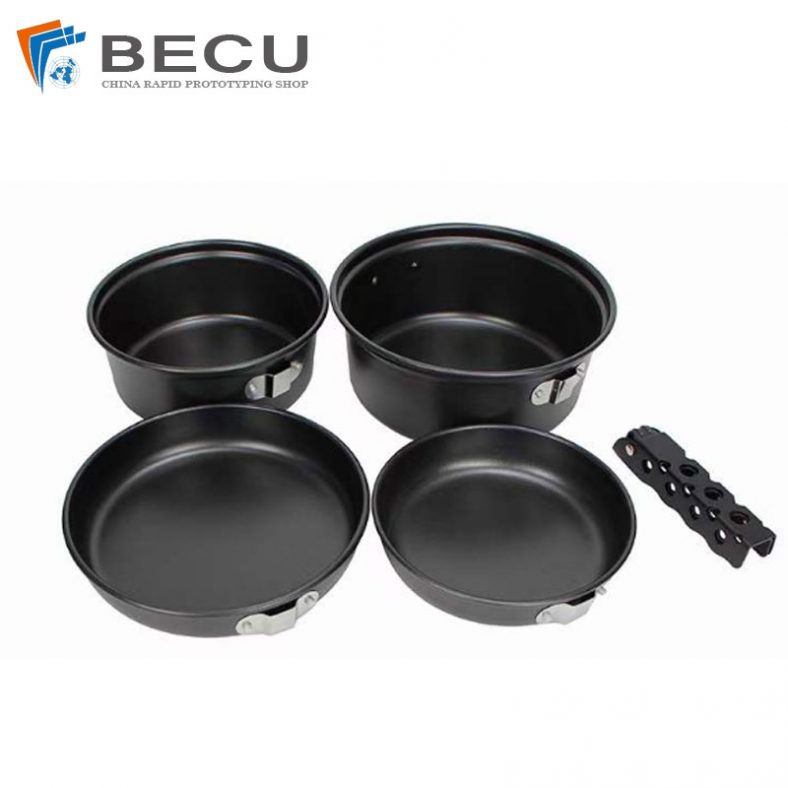
Prototype CNC Spinning Stainless Steel 316L Outdoor Camping Pot
-
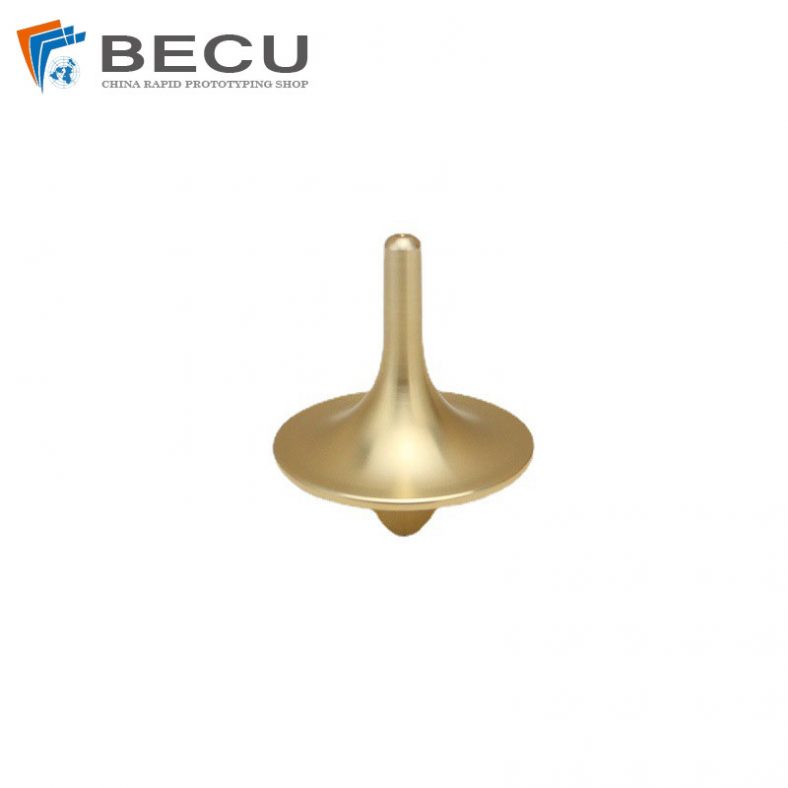
Metal Spinning Top Toy
-
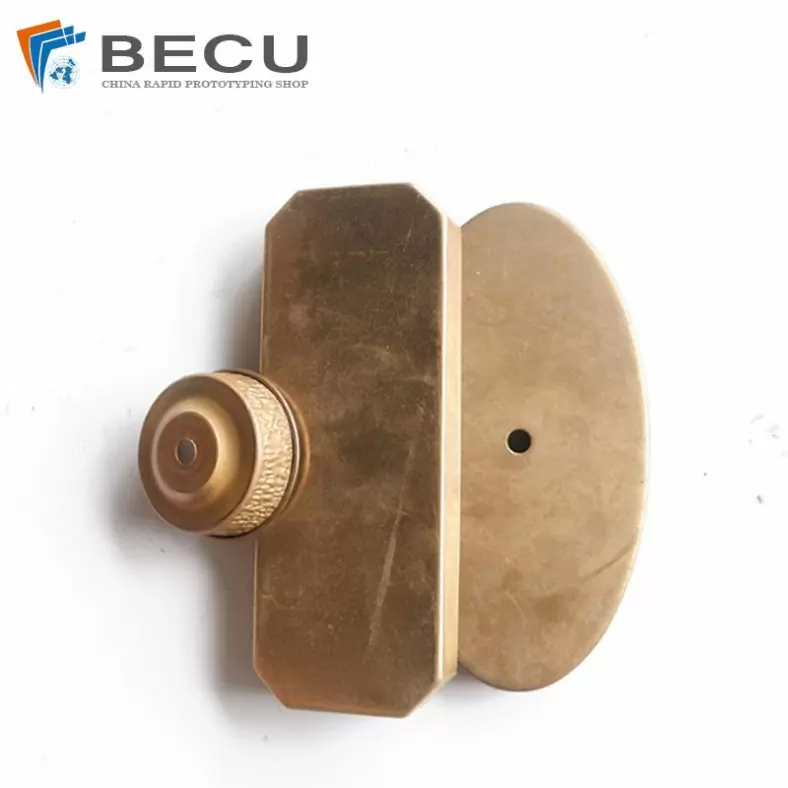
Precision CNC Spinning Art Lighting Accessories
-
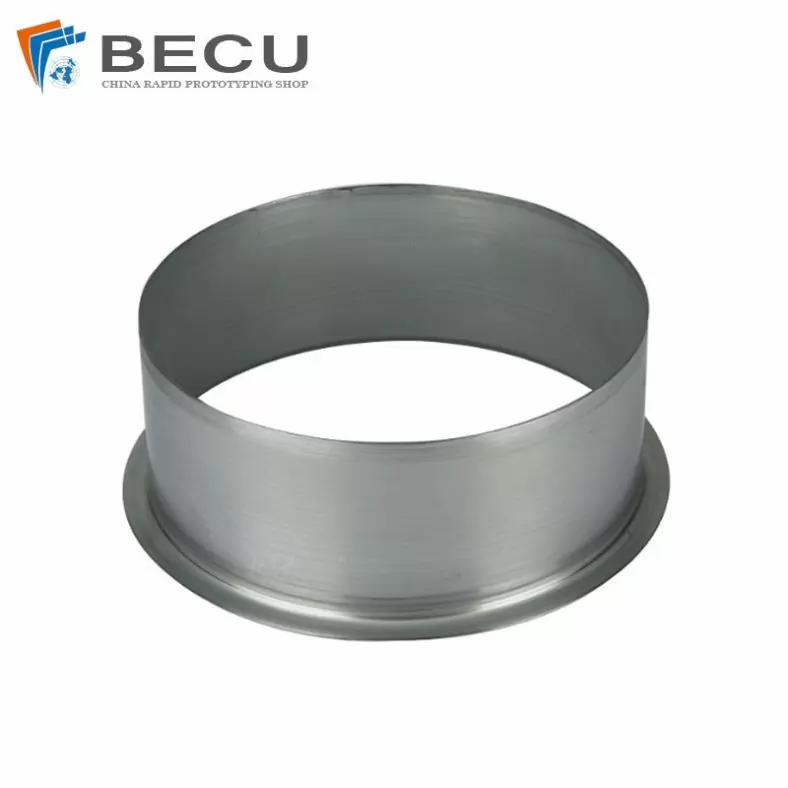
Precision Spinning Galvanized Sheet Draught Fan Accessories
-

Precision CNC Spinning 200mm Fitness Kettlebell
-

287mm Metal CNC Spinning Machinery Parts
-

Metal Spinning 350mm High Voltage Electrode Shield
-

Aluminum Spinning Parts For Automobile Shock Absorbers
-
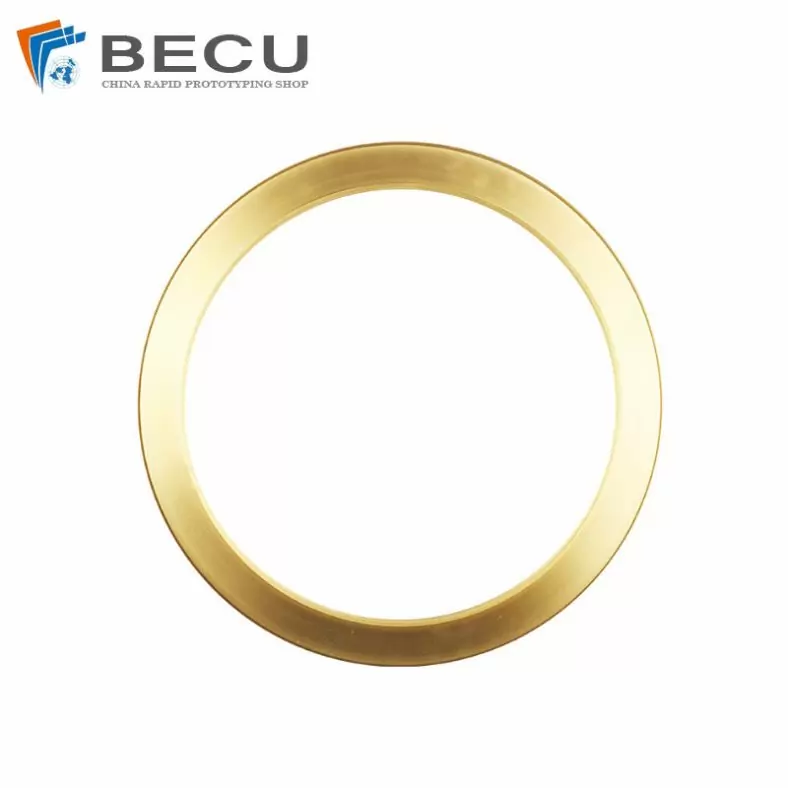
Precision CNC Spinning BBQ Grill Brass Ring Accessories
-
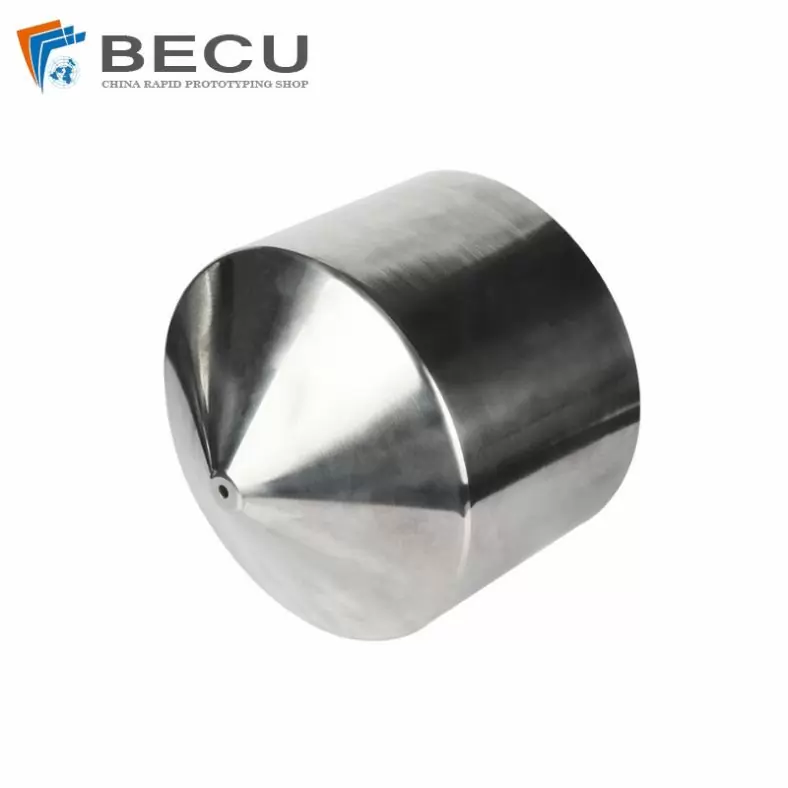
CNC Spinning 304 Stainless Steel Funnel

